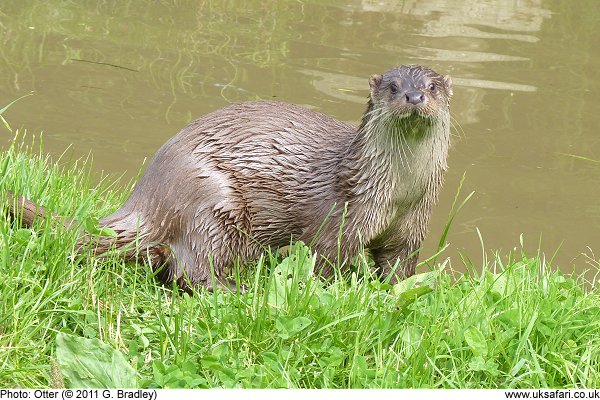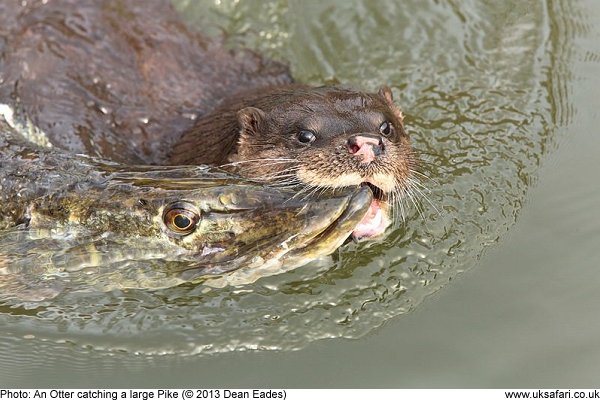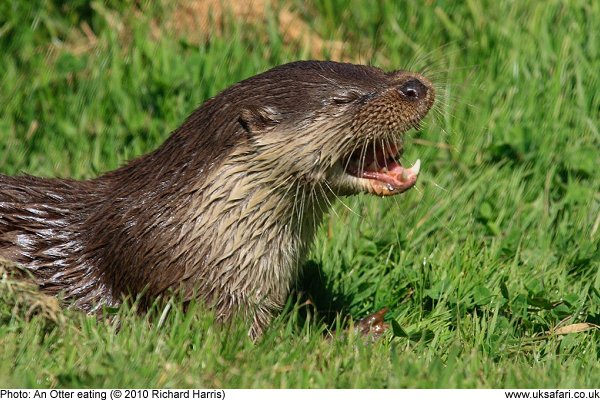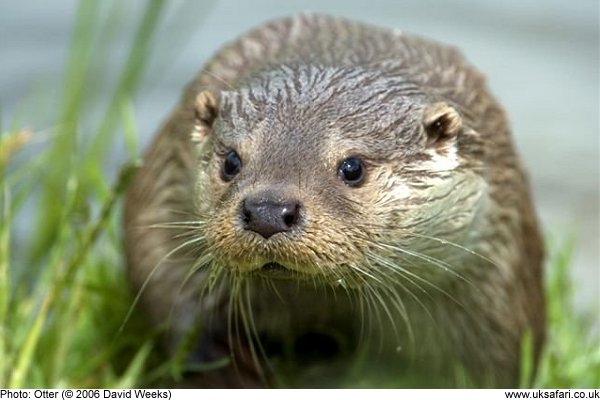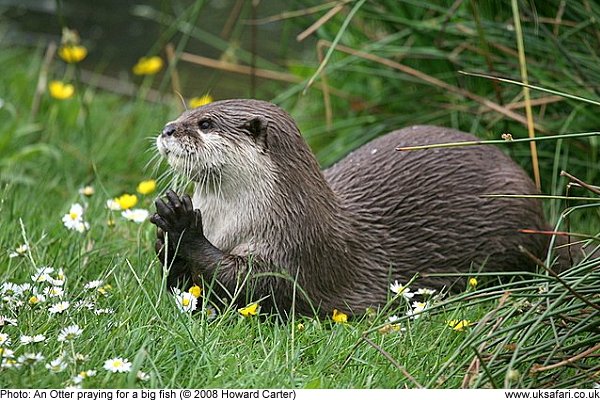 Quick Facts
Quick Facts
Scientific name: Lutra lutra
Size: Males approximately 115cm from nose to tip of tail. Females approximately 100cm
Distribution: Not common, but the otter population is increasing and they can be found in many areas of the UK
Months seen: All year round, although they are very secretive animals and mostly nocturnal
Life Span: Approx. 15 years
Habitat: Rivers, streams, lakes, marshes and coastal areas
Food: All kinds of fish and crabs, some waterfowl and small mammals
Special features: Otters are perfectly equipped for an aquatic lifestyle. They have a long, sleek body, a powerful tail, webbed feet, and they have short, dense brown fur which creates a layer of insulting air to protect the otters when they are in cold water.
Otters hunt their prey underwater. They have large lungs, and just before they dive they take one deep breath which allows them to stay underwater for more than three minutes.
In the UK, otters can breed all year round. They produce between one and five young (usually 2 or 3) which are born blind and without teeth. They stay with their mother for up to one year while she teaches them how to swim and catch food for themselves.
Adult otters have no natural predators, although in the past they were heavily persecuted by gamekeepers. Loss of habitat, polluted rivers, hunting and other human activities all contributed to the decline of our native otters. During the late 1950's, following the introduction of new and stronger pesticides, our otter population went into rapid decline. It's only in recent years that the otter population in the UK has started to recover through protective legislation and conservation programmes.
Because of their shy nature otters are difficult to spot, and it's almost impossible to know exactly how many otters there are in the UK. Surveys are usually based on field signs such as spraints (faeces) and footprints. It's guessed that there could be as many as 10,000 otters but this hasn't been proven.
In Scotland the otters which live around the coast are sometimes referred to as 'Sea Otters', but they are the same species as those otters living inland.
 Related Pages
Related Pages

 Popular Pages
Popular Pages
Amphibians, Bats, Badgers, Beetles, Birds, Birds of Prey, Bumble Bees, Butterflies, Caterpillars, Creepy-Crawlies, Deadly Spiders, Dolphins, Dragonflies, E-Postcards, False Widow Spiders, Free Newsletter, Frogs, Fungi, Garden Spiders, Glow-Worms, Grey Squirrels, Hedgehogs, House Spiders, Ladybirds, Mammals, Marine Mammals, Moths, Owls, Reptiles, Spiders, Toads, Trees, Wildlife Hospitals
© Copyright 2017 G. Bradley - UK Safari | About Us | Links | Contributors


 Otters
Otters